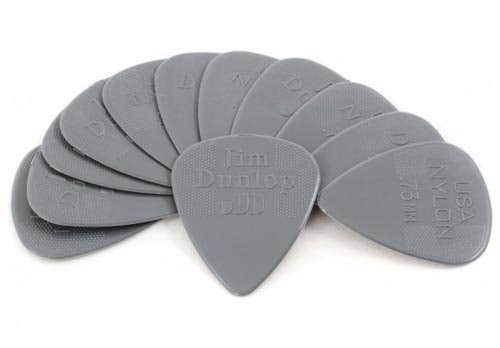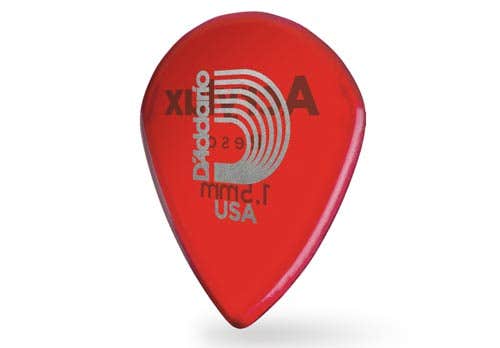What Pick Would a Pick Pick if a Pick Could Pick Picks?
Picks aren’t created equal. Some big, some small, each one with its own unique way of contributing to your playing style. If you’re sick of playing with your meaty hand pointers or you need more precision, there’s something out there for everyone.
Thickness
First, let’s get thickness out of the way. Depending on what material it’s made of a pick can be as thin as paper or as thick as a rock. The thinner a pick is the more flexible it’s going to be. These are great for strumming because the pick will flick quickly from string to string. It’ll let you hold the pick tight and not lose grip when you’re really going for it. These start around .38mm and go up to .71mm.




A thicker pick, on the other hand, will give you more precision when hitting notes but can make strumming more difficult as the added resistance can make the pick want to jump out of your hand. These start around .96mm and can have almost no ceiling as long as you can actually hold the thing. Each has a different sound as well, so experimenting to find the best fit for you is best.
You can get extremes on both ends of the plectrum spectrum, like this insanely huge shredding pick.
Size
The height and width of the pick will determine how you'll end up using it. Some are for strumming, some are for shredding. Most will fit into these three sizes.
These are the shape you’ll see the most. They look similar to an arrow head, rounded at one end and a long pointed tip at the other. At the base they’re roughly the width of your thumb so you can grip as much surface as possible while playing. If you don’t know where to start grab a pack of these.


The bloated, wide sibling of the standard pick. Instead of one point, there’s three this time. Depending on the brand each point is exactly the same, for others one point is slightly more defined than the others. These picks are great for strumming because of the added surface area. They are also great for bass as the extra resistance from the thicker strings is easier to manage.


Nimble, fast and precise picking is the name of the game. These are smaller than a Standard pick, both in width and length. It allows you to hold the pick with your hand closer to the strings, giving you more manoeuvrability to hit specific notes. Though called “Jazz”, any genre like metal, country or rock will benefit from this pick.


Material & Texture
There are five main types of material picks are made out of: Celluloid, Acetal, Nylon, Ultem and Acrylic.
Celluloid is everywhere and the most common type. While not super durable, they are quite flexible and have a bright, slippy sound.


Acetal has a strong attack that’s crisp and snappy. Dunlop Tortex is the best example of this material.


Nylon picks are very flexible. The brightest of the bunch, these are strumming machine enablers. Just don’t get to sweaty otherwise they’ll slip right out of your fingers!


Ultem is at the other end. Strong and stiff regardless of the thickness, these are great for players that really dig into chords or play thicker gauge strings.


Lastly, there’s Acrylic. A stalwart of toughness, these hold onto life far longer than any other pick. They’re also much lighter than Ultem or Acetal picks.


All of these picks can come with a variety of textures to keep them from springing out of your hand. Gloss finishes are great if you have a quite dry hand as they almost glue themselves into place. Others have rougher surfaces, feeling almost like they’re powder coated. Particular brands have specific designs like a thumb well, rubber covers or raised bumps.
Is That Even a Pick?
Do none of these combinations sound like they’d work for you? Well if you’re looking for a sound unlike any other you can use random items as picks. Famously Brian May of Queen uses coins to get his sharp, bright, metallic attack by holding the coin lightly while playing.











